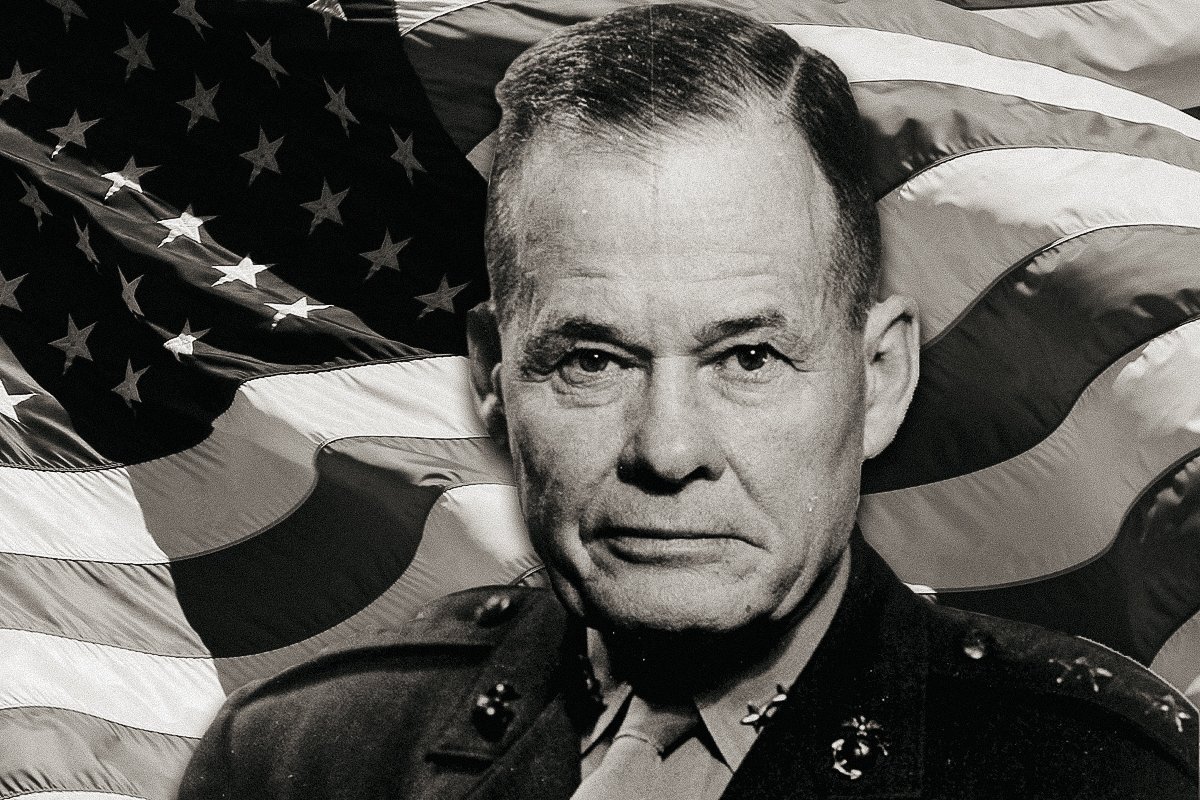
Lieutenant General Lewis Burwell "Chesty" Puller, the most decorated US Marine. Photo courtesy of Wikimedia Commons.
Lying at the position of attention in rows of metal bunk beds, 60 bald and hungry young men prepare for a very brief night of sleep. The lights go out. Then something weird happens: All 60 men scream in unison, “Good night, Chesty! Wherever you are!”
To an outsider, it might look like the ritual of a doomsday cult. But in fact, those young men are a platoon of Marine recruits, and the name they are invoking is that of the most revered individual to ever wear the eagle, globe, and anchor that each of them are in boot camp hoping to earn.
Lewis Burwell Puller, known by all as “Chesty” for his barrel-shaped chest, served 37 years in the Marine Corps. All but 10 of those were spent deployed to foreign lands. Today, more than half a century after his death, Chesty Puller remains the most decorated leatherneck in Marine Corps history. In the Devil Dog universe, he’s practically a god.
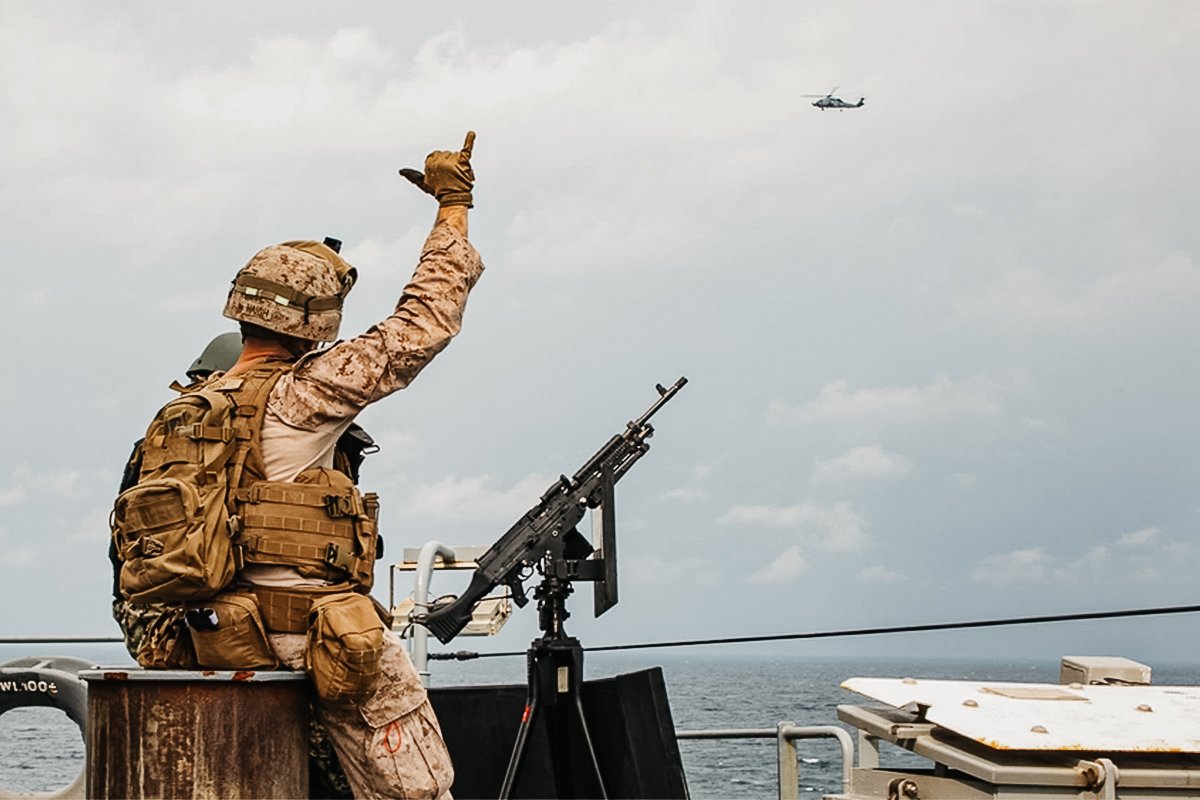
A Marine with 2nd Battalion, 7th Marines waves to an SH-60R Sea Hawk helicopter flying alongside Expeditionary Sea Base USS Lewis B. Puller (ESB 3). US Marine Corps photo by Sgt. Kyle C. Talbot.
A Legend Is Born
Chesty was born on June 26, 1898, in West Point, Virginia. He grew up idolizing Stonewall Jackson and listening to local Civil War veterans recount stories of battlefield bravery.
In 1916, while the United States was engaged in the Border War against Mexico, Chesty tried and failed to enlist in the Army. He was denied for being underage. So he decided to follow in Jackson’s footsteps instead and enrolled at the Virginia Military Institute, where the famous Confederate general once taught physics and artillery.
Two years later, when the United States got involved in World War I, 18-year-old Chesty dropped out of school and enlisted in the United States Marine Corps, declaring, “I want to go where the guns are.” He would spend most of the next four decades doing just that.
Related: How Chesty Puller Helped Save an Afghan Family in the Kabul Airlift

Chesty Puller (second from left) poses in Nicaragua, 1931. Photo courtesy of Wikimedia Commons.
Any Clime, Any Place
After completing boot camp, Chesty attended Officer Candidate School. He graduated on June 16, 1919. The war in Europe was already over. Ten days after receiving his commission as a second lieutenant, the Corps downsized and Chesty was placed on inactive service.
Disheartened for having missed yet another war, Chesty relinquished his officership and reenlisted as a corporal. The United States military was becoming increasingly active in Central America, and Chesty saw a chance to see action. His instincts were correct. In 1919, he was deployed to Haiti, where over the next five years he led Marines in an estimated 40 engagements against Cacos rebels.
Upon returning to the States, Chesty was recommissioned as a second lieutenant. In 1928, following stints at Norfolk, Quantico, and Pearl Harbor, he was tapped for another counterinsurgency campaign, this time in Nicaragua.
It was in the Nicaraguan jungles that Chesty established his reputation as an officer who led from the front. There, he was awarded his first Navy Cross for his actions in multiple engagements against local bandits. Two years later, he was awarded a second Navy Cross for repelling three consecutive ambushes while deep behind enemy lines.
“I’ve always believed that no officer’s life, regardless of rank, is of such great value to his country that he should seek safety in the rear,” Chesty would later say when asked about his leadership style. “Officers should be forward with their men at the point of impact.”
Related: Swift, Silent, Deadly: Where Does Marine Recon Stand Among Other Elite Units?

Lewis "Chesty" Puller fulfills his duties as Davy Jones during a Neptunus Rex ceremony on the way to Guadalcanal. US Marine Corps photo.
Chesty in Asia
By the onset of World War II, Chesty was a lieutenant colonel. Along with most of the Marine Corps, he would spend the war fighting island-to-island in the Pacific Theater.
As commander of the 1st Battalion, 7th Marines, Chesty was instrumental in the bloody six-month campaign to take the island of Guadalcanal. On the night of October 24, 1942, he earned his third Navy Cross by successfully thwarting repeated assaults from a larger Japanese force. At one point during the campaign, he was seriously wounded by enemy artillery. Despite undergoing surgery, he was back in the fight 10 days later.
Chesty went on to lead Marines through the Battle of Cape Gloucester on the island of New Britain. During that engagement, he earned his fourth Navy Cross. Then, in the fall of 1944, he fought in the Battle of Peleliu — one of the costliest battles in Marine Corps history.
By the time the Japanese surrendered in August 1945, Chesty was the recipient of four Navy Crosses, the Legion of Merit, a Bronze Star, and a Purple Heart. While most mortals would consider that enough action for one lifetime, Chesty’s thirst for combat was still not quenched.
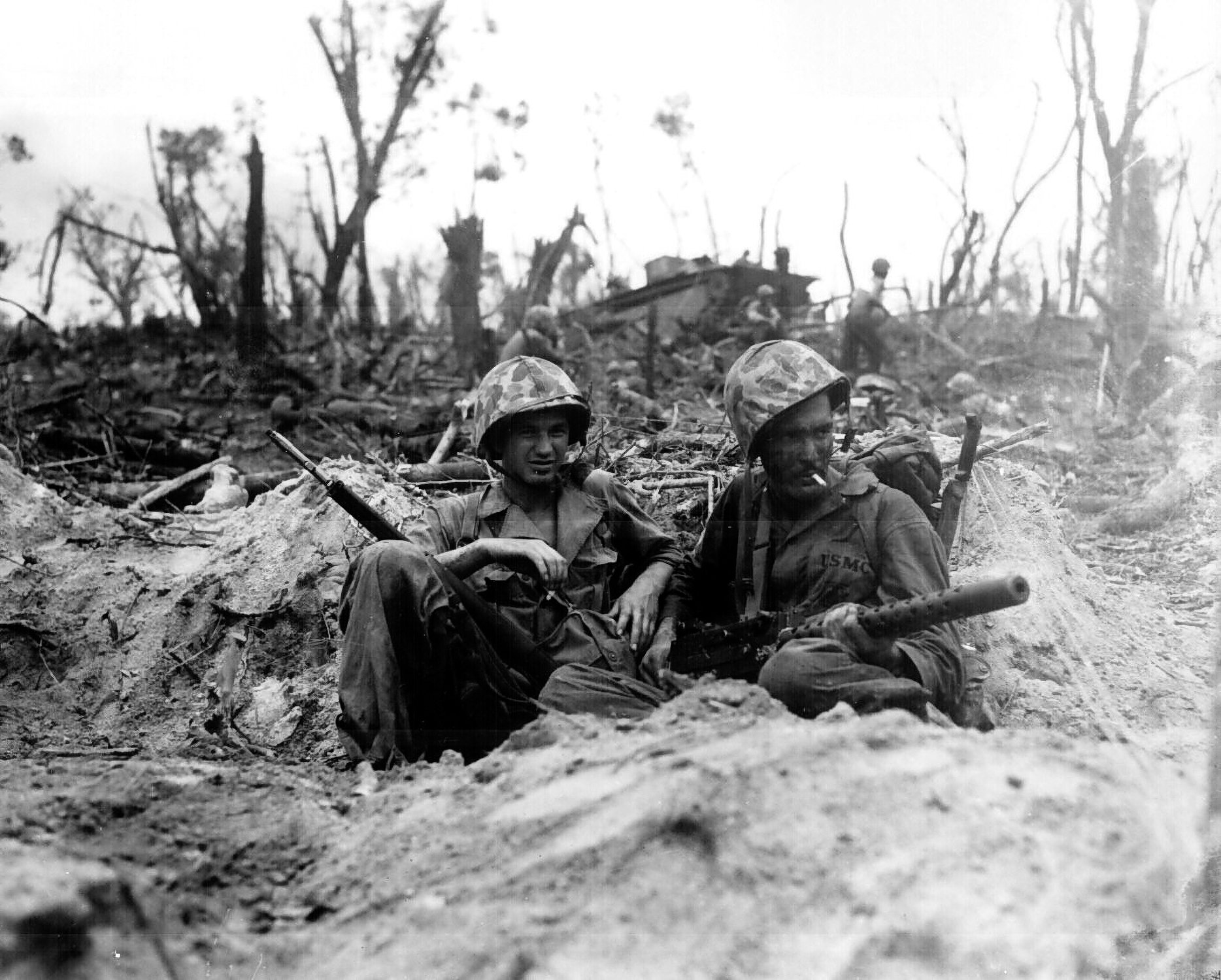
A Marine machine gun team takes a break during the Battle of Peleliu, September 1944. US Marine Corps photo.
When the Korean War broke out in June 1950, Chesty wasted no time getting to the front. In September of that year, he participated in the risky amphibious landing at Inchon, during which he earned a Silver Star. Then, two months later, he found himself in the middle of the most brutal campaign of the conflict — the Battle of Chosin Reservoir.
For 17 days in the winter of 1950, American troops endured subzero temperatures and relentless attacks from a numerically superior enemy force in the vicinity of Chosin Reservoir. It was there, while surrounded by 120,000 Chinese troops, that Chesty famously said, “We’re surrounded. That simplifies our problem of getting to these people and killing them.”
Chesty and the Marines of the 1st Marine Division killed an estimated 19,202 Chinese soldiers while fighting their way out of the reservoir. For his heroism in action from November 29 to December 4, Chesty was awarded the US Army’s Distinguished Service Cross. And for his continued, unwavering leadership over the hellish six days that followed, he was awarded his fifth Navy Cross.
As news of the Marines’ against-all-odds escape from Chosin spread, Chesty remarked, “There are not enough [Chinese soldiers] in the world to stop a fully armed Marine regiment from going wherever they want to go.”
Chesty survived the war in Korea only to be hobbled by a stroke two years later. He was promoted to lieutenant general and then forcibly retired. The dress blue uniform he hung up for good was adorned with five Navy Crosses, a Distinguished Service Cross, a Silver Star, two Legions of Merit, two Air Medals, a Bronze Star, and a Purple Heart. To this day, he is the most decorated Marine in history.
Related: MOH Recipient in Iconic Korean War Photo Inspires New Generation of Leaders
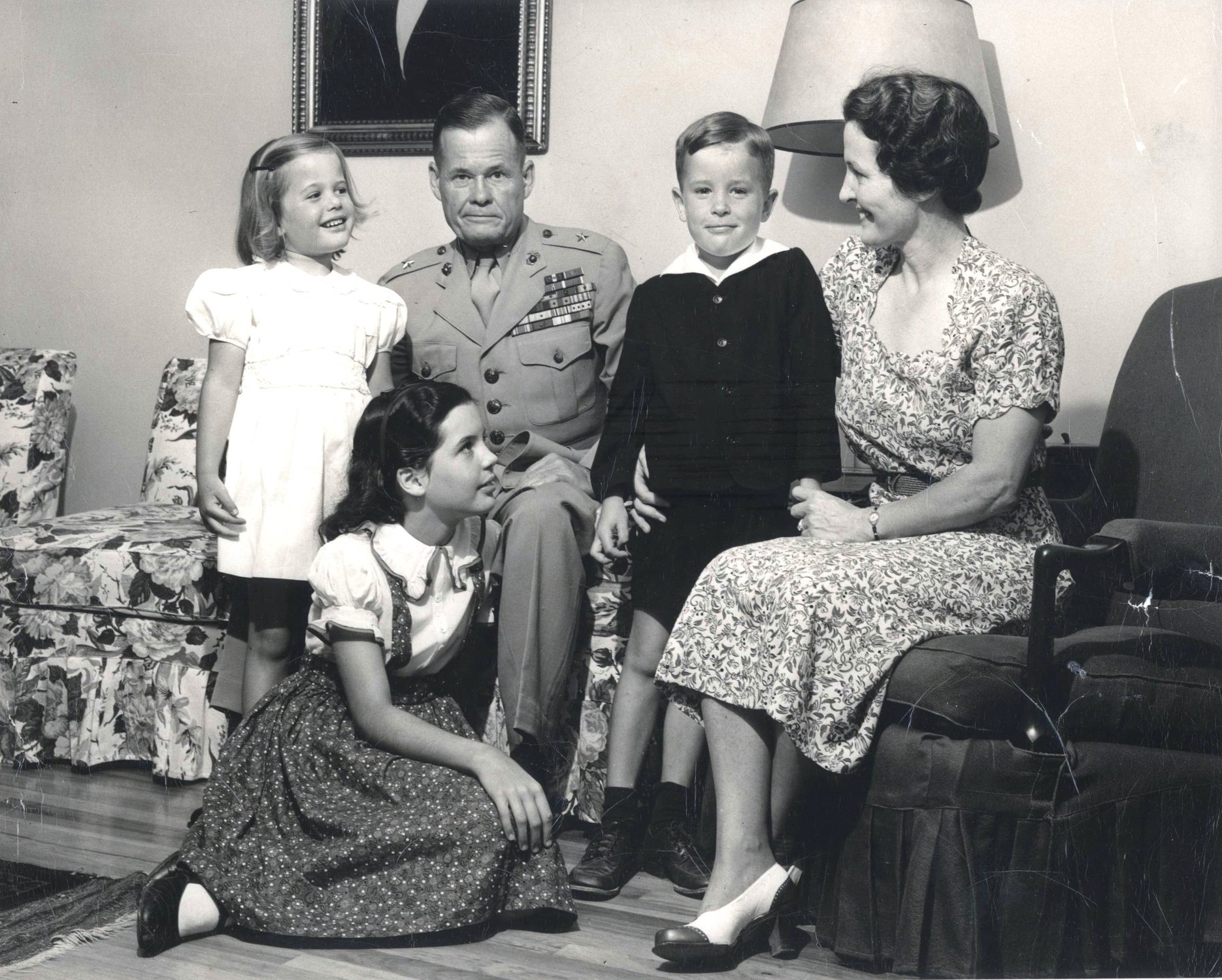
Chesty Puller with his wife, Virginia, and their children Lewis Jr., Martha, and Virginia. Photo courtesy of Wikimedia Commons.
What Finally Killed the Corps’ Toughest Marine?
Chesty was a lifelong pipe smoker. His tobacco habit contributed to dangerously high blood pressure. On October 11, 1971, following a series of strokes, he died in a Virginia nursing home.
Chesty’s son, Lewis Burwell Puller Jr., also served as a Marine infantry officer. Puller Jr. was grievously wounded in Vietnam and chronicled his journey to recovery in his Pulitzer Prize–winning autobiography, Fortunate Son. He committed suicide in 1994.
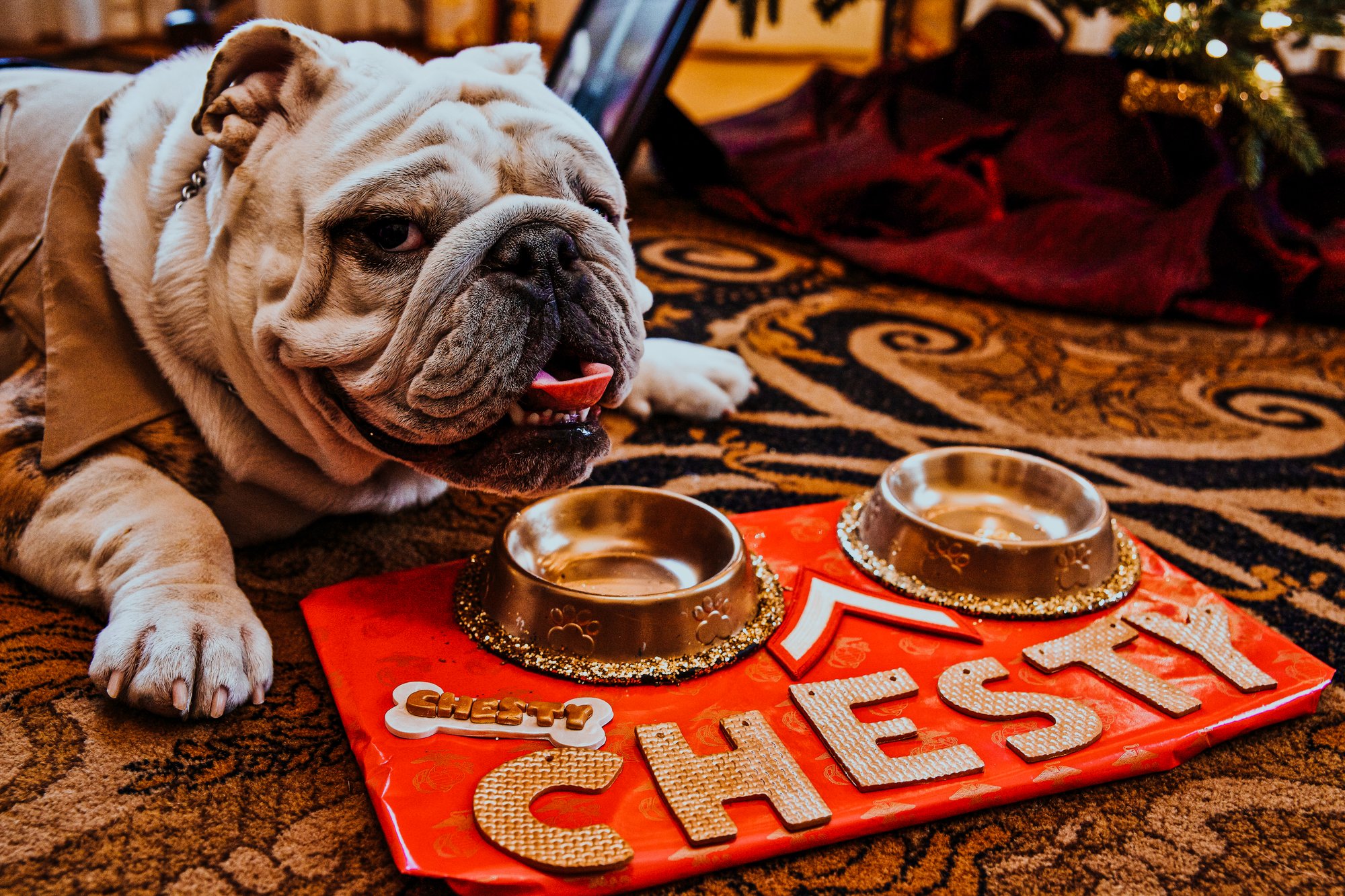
The Marine Corps mascot, Lance Cpl. Chesty XIV, poses next to a decorated Christmas tree at the Home of the Commandants in Washington, Dec. 16, 2013. US Marine Corps photo by Sgt. Mallory S. VanderSchans.
It’s been more than half a century since Chesty’s death and yet his legacy survives in many forms. Two US Navy ships bear his name, as does the Corps’ official mascot — Chesty the bulldog. Since the first mascot was christened in 1957, there have been 15 successors. Just like the bulldogs, each generation of Marines is eventually replaced by younger, hungrier Devil Dogs. And whenever the question arises of whether or not the young pups will live up to the reputation of their predecessors, Chesty has an answer: “Old breed? New breed? There’s not a damn bit of difference as long as it’s the Marine breed.”
Read Next: More Whiskey and Beer, Less Ice Cream: Chesty Puller’s War Against ‘Sissy Food’
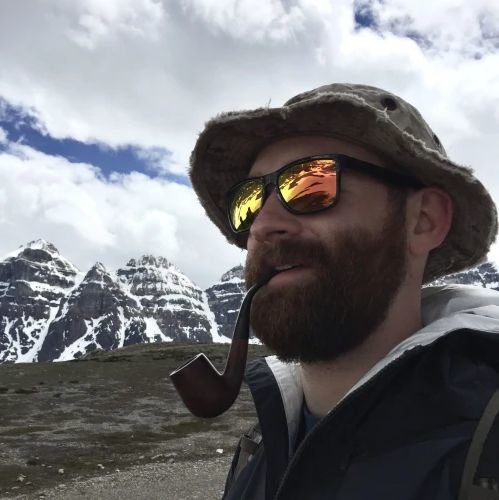
Mac Caltrider is a senior staff writer for Coffee or Die Magazine. He served in the US Marine Corps and is a former police officer. Caltrider earned his bachelor’s degree in history and now reads anything he can get his hands on. He is also the creator of Pipes & Pages, a site intended to increase readership among enlisted troops. Caltrider spends most of his time reading, writing, and waging a one-man war against premature hair loss.
BRCC and Bad Moon Print Press team up for an exclusive, limited-edition T-shirt design!
BRCC partners with Team Room Design for an exclusive T-shirt release!
Thirty Seconds Out has partnered with BRCC for an exclusive shirt design invoking the God of Winter.
Lucas O'Hara of Grizzly Forge has teamed up with BRCC for a badass, exclusive Shirt Club T-shirt design featuring his most popular knife and tiomahawk.
Coffee or Die sits down with one of the graphic designers behind Black Rifle Coffee's signature look and vibe.
Biden will award the Medal of Honor to a Vietnam War Army helicopter pilot who risked his life to save a reconnaissance team from almost certain death.
Ever wonder how much Jack Mandaville would f*ck sh*t up if he went back in time? The American Revolution didn't even see him coming.
A nearly 200-year-old West Point time capsule that at first appeared to yield little more than dust contains hidden treasure, the US Military Academy said.












